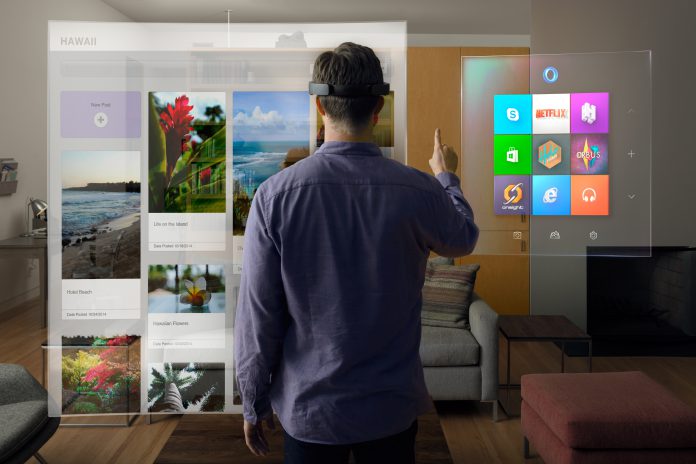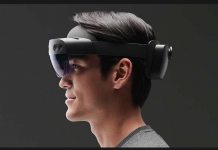As expected, the company gives little about the event away, vaguely referencing ‘new innovations for the future of computing’. Still, we know that the HoloLens 2 will have an improved depth sensor and an improved Holographic Processing Unit. Other than that, Microsoft has been quite quiet about its plans. There are some major drawbacks of HoloLens 1 that need to be addressed for Mixed Reality to really take off.
— Alex Kipman (@akipman) February 11, 2019
HoloLens 1 Drawbacks
In 2016, we talked to Devid Robustelli, co-founder of CapitolaVR, about the challenges of the headset. “We were playing outside today, outside the office, and it got overheated pretty fast. It just dies, you have to reboot it,” he explained. “The battery is pretty okay, in heavy usage with recording I think it lasts about an hour.” He also echoed some popular complaints about the HoloLens – its bulkiness and limited field of view. The 35-degree FoV is a particular limitation of the headset, presenting a large rectangle rather than covering the user’s peripheral vision. Over the past couple of years, we’ve seen patents to address this, including improved mirroring and light systems to widen it. Other patents suggest improvements to image stabilization, virtual keyboards, and high-quality images. Microsoft also appears to be considering methods to reduce eyestrain, as well as new control methods like a ring and a wand. Rumors suggest this version of the HoloLens won’t be a developer one. Thurrott’s Brad Sams said in 2017 that the next device would be for consumers. An announcement at WMC would line up with that, but it’s clear Microsoft would have to improve both size and software to catch user’s interest. Microsoft’s keynote will start on Sunday, February 24th at 9 am PT.




